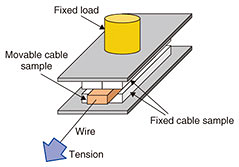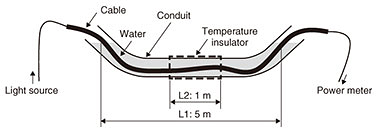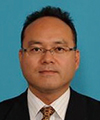 |
|
|
|
|
|
Global Standardization Activities Vol. 18, No. 8, pp. 11–14, Aug. 2020. https://doi.org/10.53829/ntr202008gls Standardization Activities for Optical Fiber and Cable Technology in International Electrotechnical CommissionAbstractThe International Electrotechnical Commission Technical Committee 86 (IEC TC 86) is a standards development organization that prepares and decides on international standards in relation to products used for optical fiber communication. In this article, we provide an overview of standardization activities, introduce topics discussed at meetings in 2019 and 2020, and describe the Japanese standardization strategy in IEC TC 86. Keywords: IEC, optical fiber, international standard 1. IntroductionThe International Electrotechnical Commission (IEC) is a standards development organization that sets all of the required standards for electrical and electronics technologies. In IEC, a Technical Committee (TC) is established for each technical field and holds detailed discussions on the contents, publication, and revision of international standards. TC 86 handles specifications and test methods of optical products in optical communication systems. NTT is researching and developing technologies and requirements for optical communication systems and actively participating in IEC TC 86 standardization activities since international standards are closely related to equipment procurement and interconnection. NTT’s activity involves making proposals for international standardization and discussing documents to guarantee the quality and interoperability of telecommunication networks and product specifications used in Japan. The International Telecommunication Union - Telecommunication Standardization Sector (ITU-T) Study Group (SG) 15 is also discussing international standardization for optical fibers and cables from the viewpoint of requirements for public communication network systems, and NTT is also actively participating in this. In IEC, standardization is mainly conducted from the viewpoint of consistency between procurement specifications for optical products and international standards, and in ITU-T, standardization is being discussed from the viewpoint of securing interoperability of communication systems and requirements. Standardization activities of IEC and ITU-T are being promoted in close cooperation with each other. In IEC, TC 86 is in charge of fiber optics technology and its main objective is to establish standards such as optical, environmental, and mechanical requirements of fiber optics products for optical fiber systems, such as optical modules and devices used with optical fiber cables, connectors, and communication equipment. The technical fields of TC 86 are shown in Fig. 1, and its organizational structure is shown in Fig. 2. TC 86 has three Subcommittees (SCs) and makes decisions in each technical field. SC 86A is in charge of optical fibers and cables, SC 86B is in charge of optical connecting and passive devices, and SC 86C is in charge of optical subsystems and active devices. It also has 12 Working Groups (WGs) to discuss specific standards documents. Each WG proposes new or revised standards for the technical field it is in charge of and prepares documents, which are then issued and reviewed by each SC. This article describes recent trends in optical fiber and cable standards being discussed in IEC.
2. Recent trends in standardization for optical fiber and cable technologyIn the field of fiber optics, which IEC TC 86 is responsible for, discussions on the standardization of optical cables and connecting devices for access systems have been active, especially against the background of the rapid increase in demand for optical fiber cables in datacenters and the rapid spread of FTTH (fiber to the home) in Europe and emerging countries. In SC 86A, which handles optical fiber cable standards, revisions are being made to optical fiber and optical fiber ribbon standards in line with the increasing fiber count and high density of optical cables, and proposals and discussions are being made on various testing methods for optical cables in consideration of the usage environment in each country. A new standardization of the partially bonded optical fiber ribbon, which was developed using ultra-high-density optical cables, and new test methods for the friction coefficient and freezing characteristics of optical cables were proposed by Japan and agreed upon in SC 86A. Figure 3 shows an example of the structure of an optical fiber ribbon. Conventional optical fiber ribbons have restricted flexibility in handling because they cover multiple optical fibers in a unified manner. A partially bonded optical fiber ribbon has greatly improved flexibility, such as being able to be rounded or bent in any direction, by being bonded discretely in the longitudinal direction. Since the size and test method were specified on the assumption that the conventional optical fiber ribbon would not deform, the standard was revised to allow consideration of the partially bonded optical fiber ribbon, and a new standard document was published as IEC 60794-1-31. The partially bonded optical fiber ribbon enables the increase in the mounting density of optical fiber in optical cables to the upper-most limit, has been used for ultra-high-density optical cables in Japan, and has recently begun to be used for densifying high-count optical cables in other countries.
Standards for optical cable testing methods are also essential to objectively guarantee optical cable characteristics. In Japan, low-friction indoor cables have been developed and introduced for indoor wiring, but because there is no standard test method for the friction coefficient of optical cables, it is difficult to objectively judge the performance of similar products. Figure 4 shows the friction coefficient test method for optical cables proposed by Japan. This method is based on the method of testing the coefficient of friction between plastic films and was developed by NTT. As the number of optical cables to be installed overseas has increased, the friction between optical cables has attracted a great deal of attention, and an agreement was reached to establish a new standard as one of the methods for testing the mechanical properties of optical cables.
In addition, Japan proposed a new test method to evaluate the freezing characteristics of an optical cable considering its installation in a cold region. The proposed test method, shown in Fig. 5, was designed to test the characteristics of an optical cable by installing the optical cable in a water-filled conduit, cooling it, and simulating the freezing environment in the conduit where the optical cable is actually installed. NTT is installing and operating optical cable facilities in various environments in Japan. The optical cables used in these facilities are evaluated using this test method, and the necessary conditions for countermeasures are specified. There are few examples of knowledge and proposals concerning the frozen environment, and it has attracted a great deal of interest from the participating countries.
These new optical fiber cable standards enable us to expand Japanese technology worldwide, eliminate inferior products, and objectively guarantee the characteristics of optical cables in the user’s environment. 3. Further activitiesJapan has aggressively promoted the domestic deployment of optical fiber and cable technology and has a strong presence as one of the major countries in IEC TC 86. Based on NTT’s extensive experience and knowledge in the introduction and operation of optical fiber and cable technology, NTT will contribute to the development of international standards that contribute to the development of optical communication networks by closely cooperating with ITU-T. NTT will also promote the establishment of next-generation optical fiber and cable technology, which will be indispensable for the implementation of the Innovative Optical and Wireless Network (IOWN) through both research and development and standardization activities. |
|
















